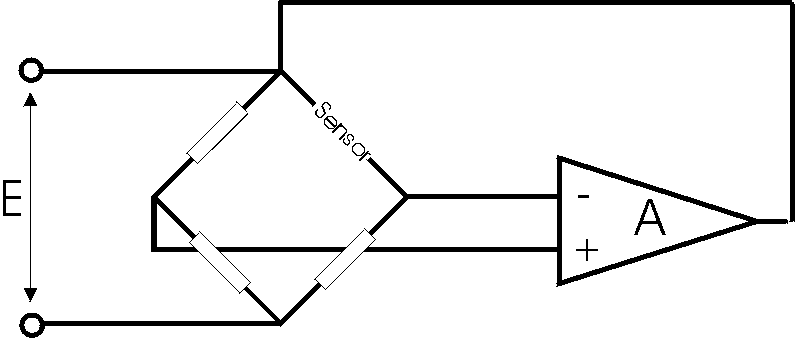Constant Temperature Anemometers
Hot-wire and hot-film anemometers are normally operated in the constant temperature (CTA) mode, the electronic circuit for this being shown schematically in Figure 1. Since the resistance of a wire is proportional to its temperature, maintaining a constant resistance R of the probe means that its temperature is also kept constant. The voltage applied to the top of the Wheatstone bridge (i.e. the 'bridge' or 'output voltage') provides a measure of the heat transfer from the probe and this heat transfer is a measure of the fluid parameter under consideration at the time.

Figure 1 Basic circuit for constant temperature thermal anemometer
If it is assumed that the bridge is essentially balanced at a certain condition then it can be seen that a reduction in the resistance of the probe, due to an increase in heat transfer causing a fall in temperature, will cause the bridge to become unbalanced. This change will introduce a positive error voltage at the input of the servo-amplifier. After considerable amplification, the signal from the amplifier increases the bridge voltage and hence also the current through the sensor, so that the sensor is heated and the bridge balance is restored. In this way the probe temperature is kept essentially constant and the effect of the thermal inertia of the probe is minimised.
Since the amplifier has a very high gain and the probes are very small, the anemometer is able to respond to very rapid fluctuations in velocity. In practice, the cut-off frequency of hot-wire probes exceeds several hundred kHz and for special applications over 1 MHz can be reached. Since film probes are larger than the wire probes, their frequency response is not as great but they are still able to measure up to about 30 kHz. Hot-film probes are often more robust than the hot-wire sensors.
Home | Current Research | Research Opportunities
Publications | Staff and Students
Research Facilities | Travel Information | Contact Information | Links